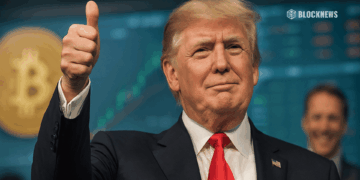- The SEC chair wants a formal token taxonomy where most network, collectible, and utility tokens are not treated as securities, while tokenized stocks and bonds clearly remain so.
- He says investment contracts can end, meaning tokens sold in an initial securities offering shouldn’t automatically be treated as securities forever once networks mature and promises are fulfilled.
- Project Crypto aims to streamline capital raising, clarify where tokens can trade, and align with new legislation and CFTC oversight, all while keeping a hard line on fraud and misrepresentation.
The SEC’s chairman is finally putting more shape around how he wants the U.S. to regulate crypto — not by calling everything a security, but by building a clearer framework under what he’s calling Project Crypto.
In a new speech, he said the goal is basic fairness and common sense: give builders and investors clear rules, rooted in the Howey test, while admitting that not every token behaves like a stock and not every on-chain transaction should be treated like a Wall Street offering. At the same time, he stressed that none of this is a softening on fraud: lies, missing money, and fake promises will still get the SEC’s full attention.

Most Tokens Aren’t Stocks Forever
The chair repeated a simple point that’s been controversial for years: “crypto asset” is a tech label, not a legal one. Many tokens trading today aren’t securities on their own, even if they were once sold inside a securities offering.
In his view, the “investment contract” is the agreement and the promises — not the token itself. Under Howey, that contract is about people investing money with a reasonable expectation of profit from someone else’s efforts. Those promises can be fulfilled, fail, or just run their course. When that happens, the contract ends; the token doesn’t stay a security forever just because of its origin story.
He sketched out a rough token map in plain language: some tokens act like digital commodities or “network tokens” tied to functional, decentralized systems; others function as collectibles like art or in-game items; others are pure tools such as tickets, memberships, or credentials; and then there are tokenized versions of traditional stocks and bonds, which stay firmly inside securities law.
The key idea is that economic reality matters more than branding. A token is no more a permanent security than a piece of land near Howey’s old citrus groves is still a security today just because it once sat inside an orange-farm investment scheme.
What Project Crypto Changes in Practice
Looking ahead, the chairman said he has asked staff to design a tailored offering regime for crypto assets that do start life inside an investment contract, so teams can raise capital with clear disclosure and limits instead of living in endless gray areas.
He also said he supports “super-apps” that can custody and trade multiple asset types — tokenized stocks, commodities, stablecoins, and network tokens — under one regulatory umbrella. In his vision, tokens that launched as part of an investment contract could eventually trade on non-SEC platforms, once the securities phase is genuinely over and the network stands on its own.

He emphasized this is not about expanding the SEC’s turf. The Commission will keep coordinating with the CFTC, banking regulators, and Congress, and he strongly backed new legislation to lock a crypto market-structure framework into law so a future SEC can’t just flip the table and reverse course.
In the end, he framed Project Crypto as a promise: clear lines instead of constant fear, tough fraud enforcement instead of blanket hostility, and enough humility to admit that not every innovation belongs in the securities bucket. Markets will still decide winners and losers — but at least they’ll do it under rules that are “firm and fair,” rather than guesswork.














